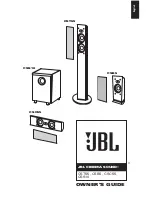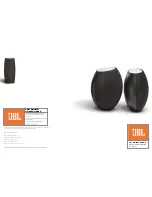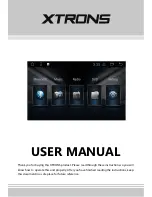
• English
- 23 -
Rigging Manual 1.0
COSMO Line Array – Instructions for use
1 Notes on Rigging Safety
This symbol, wherever it appears, alerts you to the presence of a crush hazard.
Be sure to perform every step correctly as instructed in the rigging manual to avoid pinch/
crush injuries.
This symbol, wherever it appears, alerts you to the presence of hoisted heavy
loads. In the event of a sudden fall or other uncontrolled movement, these loads can
cause serious personal injury with potentially fatal consequences and considerable
damage to property. Keep people out of the danger zone at all times. Follow the
instructions in this manual.
Wear suitable headgear, gloves, and footwear during
assembly to protect against mechanical hazards and injuries.
• Rigging hardware
Use the rigging hardware for no purpose other than to set up HK audio speaker cabinets
in flown arrays or ground stacks. Do not hoist components other than those that are part
of this system. Use HK Audio speaker cabinets only as intended with the original rigging
hardware. Use only original replacement parts.
• Prerequisites for installing the COSMO Line Array
Use only 2006/42/EC-compliant, manufacturer-certified lifting accessories or, in countries
beyond the 2006/42/EC directive's purview, equivalent devices as specified by local
regulations.
Follow these installation instructions. The indicated working load limit cannot be
guaranteed and the manufacturer will not be liable for damages in the event of improper
installation or the use of unauthorized rigging hardware. The system's working load limit
cannot be guaranteed and the manufacturer will not be liable for damages in the event
that loudspeakers, rigging hardware, connecting and fastening components, or lifting
accessories are modified in any way. Components affecting safety may only be repaired by
the manufacturer or authorized agents; otherwise the operating permit will be voided.
Before installing the system, make sure the supporting structure and attachment points
are suitable for this purpose and have the required load-handling capacity.
Do not exceed specified limits such as maximum working load limit and curvature and tilt
angles. For more on this, please refer to the instructions in section 3, Intended Use.
When hoisting any load, make sure its center of gravity is directly below the attachment
point or load-bearing component to protect against the hazard of a swinging load.
The operator is to ensure the individuals tasked with operation, assembly and
disassembly, maintenance, inspection, and the like are qualified to perform the given
task. Heed the specifications as to the intended use of the system and its components.
Designate only qualified specialists as set out in the rigging manual to assemble and
disassemble the system. The operator is to determine and ensure the personnel tasked to
do this have the necessary qualifications in keeping with the complexity of the fixed or
mobile installation and the applicable local laws, regulations, and engineering rules. Train
operating personnel in compliance with the instructions for use.
Provide adequate lighting during assembly and disassembly, cleaning, troubleshooting,
maintenance, and repair. Heed Directive 89/654/EEC as transposed into local law.
• Curving in compressed mode
Use only tensioning devices such as ratchet or lashing straps with self-locking
mechanisms, for example, hooks with a safety catch, to curve arrays. Make sure the
tensioning device is able to gradually release tension, step by step. Keep a watchful eye
on the system and beware of sudden and unexpected movements.
• Safe application
Installation is to be carried out by qualified personnel only, and only at attachment points
with a sufficient working load limit. Heed the local building code and building regulations.
Do not stand below the system or between the system and walls, fixtures or any other
surrounding object when hoisting, lowering, assembling, disassembling or otherwise
moving the system. Caution, crush/pinch hazard: Do not reach in between parts of the
system when hoisting and lowering it. Keep a watchful eye on the system and beware of
sudden and unexpected movements.
Wear PPE (personal protective equipment) to protect hands and feet when assembling
and disassembling the system. Everyone in the vicinity when setting up and tearing down,
curving, or troubleshooting flown arrays is to wear protective headgear.
Use only suitable climbing aids such as ladders, scaffolds and the like. The sole
responsibility for seeing to this lies with installing company.
The operator is obligated to allow only those persons to work with the rigging hardware
who are:
• at least 18 years old
• physically and mentally able
• familiar with the basic rules of industrial safety and accident prevention
• trained to perform the given tasks. The same applies to assembly, disassembly,
operation, maintenance, troubleshooting, maintenance, and inspection.
If there are signs of an approaching thunderstorm when setting up systems outdoors,
determine if it is safe to do so and refrain from doing so if it is unsafe. If a thunderstorm
arrives, you may have to use the system to assist with evacuation. Stop all work on the
system, ensuring no one touches conductive parts, and clear the area. Seek cover or a safe
area, and continue monitoring weather forecasts.
Do not use the system or its components to hoist and secure people.
Clearly designate the responsibilities of personnel tasked to perform activities such as
transporting, storing, putting into service, installing, dismantling, operating, maintaining,
repairing, inspecting, and disposing of the system, and ensure the designated individuals
are qualified to do so. If personnel lack the necessary qualifications, this work may be
carried out under the supervision of qualified personnel in cases of extreme urgency.
Immediately rectify defects and other damage that may impair safety.
Regularly check personnel for work safety awareness.
When attaching the rigging frame without a pick-point adapter, always do so with two
suitable shackles fastened to the center perforated rails. Always use the pick-point
adapter when attaching the rigging frame to a single load line.
Attach hardware at an angle no greater than 60° when using two load lines. The wider
the lines are splayed, the greater the force exerted, especially when these lines are short.
Never exceed lifting accessories' working load-versus-angle limit.
Secure fixed and mobile installations – in this case, speakers with rigging hardware –
with two independent devices to prevent them from falling. You may dispense with this
secondary safety device or arrest wire in cases where the attaching device is intrinsically
safe, requires tools to unfasten, and is secured with a locking mechanism to prevent it
from disengaging on its own. Heed the applicable local laws, regulations, and engineering
rules. Install safety features so as to ensure components cannot drop any distance.
Safeties must be able to catch accessories or parts that are loose or may become loose.
Heed local regulations when using fasteners, attaching devices and lifting accessories.
Factor potential dynamic forces (‘jerk' forces) into the equation when determining the
proper size and load-bearing capacity of fastening devices.
Ensure all components in the load line – shackles and other lifting accessories, fasteners,
tensioning devices, hoisting equipment, load-bearing equipment, load-bearing structures,
and the like – are suited to the purpose and rated for the working load limits need to lift
and hold the system in place. The area below the system is off limits; people may only
enter it if all components in the load line are designed to be intrinsically safe.
Components that are not expressly intended for overhead use above people may be
suitable if they hold a load no greater than half of the specified working load limit.
Observe the applicable local laws, regulations, and engineering rules.
Store materials securely on a stable surface. Keep fire extinguishing equipment and
passageways clear and accessible, particularly emergency escape and rescue routes.
Do not step or climb on the system and its components.
If a flown system could be exposed to wind, use at least two suitable fasteners to secure
it so as to prevent twisting and other unintentional movement. Consult the rigging
manual to learn more about this. Make sure these fasteners exert no more force than
necessary to prevent the system from moving significantly at safe operating wind speeds.
Do not exert excessive force.
Do not deploy the system at unsafe wind speeds beyond the maximum allowable limit.
Remove or lower and secure the system before the wind reaches wind force 8 or gusts
at 20 m/s. Plan, coordinate and document these measures. Constantly monitor weather
forecasts.
The wind speed limit may be lower for the stage, PA tower or other primary supporting
structure. If so, be sure to abide by it.
If the wind speed limit for a stationary or mobile system is exceeded, clear the danger
zone and close off the wider surroundings. The system may not be dismantled at winds
exceeding the limit.
• Speaker stands
Be sure to observe speaker stands' working load limit. Note that for reasons of design
and construction, most speaker stands are approved to bear centric loads only; that is,
the speakers' mass has to be precisely centered and balanced. Ensure speaker stands are
set up stably and securely. Take appropriate added measures to secure speaker stands, for
example, when:
• the floor or ground surface does not provide a stable, secure base
• they are extended to heights that impede stability
• high wind pressure may be expected
• there is the risk that they may be knocked over by people
Special measures may become necessary as precautions against unsafe audience behavior.
Do not set up speaker stands in evacuation routes and emergency exits. Ensure corridors
are wide enough and put proper barriers and markings in place when setting speaker
stands up in passageways. Mounting and dismounting are particularly hazardous tasks.
Use aids suitable for this purpose. Observe the applicable local laws, regulations, and
engineering rules when doing so.
1 Notes on Rigging Saf
et
y
















































